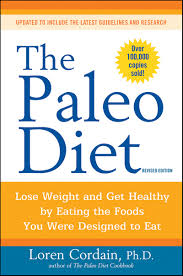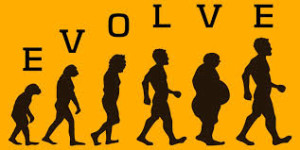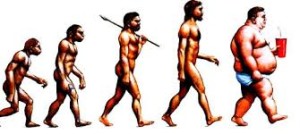How Modern People Can Improve Their Life Eating Like Their Ancestors
Dr. Loren Cordain is the preeminent authority on all that is Paleo and our ancestral eating habits and methods. Dr Cordain will be the exclusive guest with Tom Matt on his radio talk show, “Boomers Rock” live October 27th at 6:00 PM EST on ‘The VoiceAmerica Radio Network’.
The Paleo Diet is based upon eating wholesome, contemporary foods from the food groups our hunter-gatherer ancestors would have thrived on during the Paleolithic era, the time period from about 2.6 million years ago to the beginning of the agricultural revolution, about 10,000 years ago, and as eating plans go this interview is a good one for the lowdown on all things Paleo!
So what exactly is the Paleo Diet?
Are we our own worst enemies? Modern lifestyle and the standard American diet has increased our obesity rate to 35.7% in 2012 from a modest 13% in 1962. What is the problem? Arenât we a fitness and diet obsessed culture? Isnât everyone trying to eat according to the U.S.D.Aâs Dietary Guidelines for Americans? Maybe this is the problemâ¦
The Paleo Diet is set of nutritional guidelines (I donât like the word âdietâ) based on our genetics. According to the Neanderthal genome project, modern humans share 99.7% of the same genomes as our caveman ancestors. It is widely accepted that most of our Paleolithic ancestors ate mostly vegetables, lean meats and some fruit. The addition of dairy and grains into our diet was not introduced until much later, 10,000 to 20,000 years ago, with the invention of agriculture.
This does seem like a long time ago, but in the history of man, that is a drop in the bucket of time. Basically, our bodies still havenât adapted an ability to properly digest these âmodernâ foods. Modern processed foods cause high levels of inflammation within our bodies. Because the Paleo Diet eliminates these foods, it should be considered a very anti-inflammatory diet.
What foods are not Paleo?
Grains, dairy, legumes/ beans and sugar are the foods to avoid on the Paleo diet.
Most grains contain inflammatory properties such as gluten and lectins. Lectins are toxins naturally made by grains that act as a natural defense system for the plant. Just like poison ivy oils deter you from touching the leaves of the plant, lectins irritate your digestive system so that you donât want to eat the grains in the future.
Gluten is a protein in wheat, barley and rye and is highly inflammatory to all humans. You may say that, âI eat wheat all the time and I feel fine,â but there is a spectrum to the response to eating gluten. At the extreme is Celiac disease, but there are also other low level reactions that could include eczema, acne, IBS and Crohnâs disease, diabetes, gall bladder and thyroid issues and other autoimmune disorders.
Basically, gluten is a protein that cannot be digested in the human body, but is still absorbed into the bloodstream. I like to use the analogy of your intestinal wall being a mesh screen that you sift sand (digested food) through and gluten is like throwing a bowling ball through that screen. Your immune system identifies these protein molecules, once absorbed into the bloodstream, as virus or bacteria like properties, sends an immune response and causes a constant state of inflammation.
Dairy, especially pasteurized cowâs milk, has similar inflammatory properties. Another interesting fact is that modern humans are the only species that continues to drink milk following infancy. A portion of the world is lactose intolerant, but some people have minimal issues with consuming dairy. Goatâs milk, raw cowâs milk and especially grassfed dairy products can sometimes be more tolerable than pasteurized grain fed cowâs milk.
Dairy is definitely a food that a lot of people are on the fence about but most Paleo enthusiasts stay away from.
Legumes and beans (including soy) also have inflammatory properties similar to lectins and gluten and are not easily digested. That is why they are the âmusical fruitâ. They are also high in carbohydrates.
What foods are Paleo?
So what do you eat on the Paleo diet? Simple: vegetables, lean meats, some fruit, healthy fats, nuts and some tubers (sweet potatoes and yams).
Here are some examples:
Vegetables: anything that is a non-starchy vegetable. This may include spinach, broccoli, cauliflower, asparagus, celery, carrots, zucchini, cabbage, greens, etc. (Potatoes are not a vegetable). Consume an unlimited amount throughout the day.
Meat: wild caught seafood, poultry and fowl, grass fed beef and wild game, eggs, organ meats, bacon(!), etc. Consume a serving with every meal.
Fruits: berries and citrus are the best because of their lower sugar content. Consume one to two servings daily maximum because of high sugar content.
Fats: Coconut oil, olive oil, avocado oil, grapeseed oil. Some people do well with grassfed butter, such as Kerrygold. Avoid vegetable oil, soybean oil, and corn oil. Consume in baking, sauteing and to add some flavor if needed.
Nuts: almonds, pistachios, pecans, etc. Consume no more that 2 ounces per day. *Peanuts are legumes, not nuts.
Tubers/roots: Sweet potatoes and yams, turnips, jicama, squash, pumpkins, etc. Consume a couple of times a week if you are happy with your body composition or after a hard workout to replenish glycogen levels.
Basic Nutrition of the Paleo Diet
You may wonder about the fiber and nutrients you normally get from eating grains and other non-paleo foods. In a 2005 study, Loren Cordain ranked different food groupsâ nutrient density in 100 grams of each food. He found that grains and dairy are significantly lower in nutrient density than paleo foods (lean meat, seafood, vegetables and fruit).
In a different study by Dr.Cordain from 2002, he found that a 2200 calorie dayâs worth of paleo meals had 42.5 grams of fiber. The Recommended Daily Allowance [RDA] is 25g for women and 38g for men while the average American diet only provides 12 grams. He also found the RDAâs for vitamins and minerals were met or exceeded by several hundred percent, except for calcium, which you need less of if you have a higher magnesium intake. The data is impressive and a link to Cordain’s report can be found here.
How can I start the Paleo Diet?
Easily! Cut out all grains, dairy, sugar, processed foods and legumes. Eat the above mentioned foods and only eat when you are hungry. Create meals in bulk so you can easily reheat leftovers. There are a ton of free websites that are dedicated to Paleo recipes and meal plans. Try to be 100% compliant for 30 days. This is usually enough time to let any symptoms of inflammation reduce enough to see some difference in how you feel.
After 30 days add back in some dairy or corn or anything you have had a hankering for over the past 30 days. The important part is to pay attention to how you feel after adding these foods back in. Only re-introduce one at a time so you know what effect it will have on your body. If you feel horrible after drinking a glass of milk, donât do dairy. If you feel fine after having some corn chips, indulge every once and a while.
Keep track of how you look and feel throughout your 30 days of Paleo. Take measurements including circumference of your waist, hips, thighs, and arms. Weigh yourself weekly and have your body fat percentage measured. Get your blood work done after the 30 days to see if you have a change for the better compared to your last work up.
One thing to look out for is what people call âthe Paleo fluâ. This usually occurs within the first 2 weeks of adopting the Paleo diet and is when your body switches to using glucose created from fat and protein from using easily accessed glucose from a higher carbohydrate diet. You typically feel lethargic, achey, irritable and have a headache. This will pass in a couple of days, donât let it deter you.
This diet may not be for everyone for many reasons including religious beliefs, cost of real food or fear of trying something different from contemporary nutritional dogma. What you can do is rest assured that you are getting highly nutritious and delicious meals that can positively impact your health and possibly reduce modern lifestyle diseases. I suggest you try it for 30 days and see how you feel. Â For more info visit Boomers Rock.









